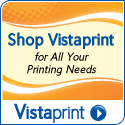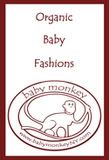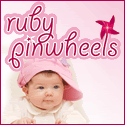supplemental art at new child montessori http://www.newchildmontessori.com/monart.html
Texture is the surface quality- rough, smooth, wet, dry, soft, fuzzy, hard, glossy, matt, silky,
bumpy, prickly, slick, shiny, dull, etc. It can be tactile or visual.
Use of texture includes collage, texture painting, mixed media, or visual use of line or pattern.
- Mystery Bag: Put various objects with texture in a bag. Take turns
reaching in. Feeling one item, describe how it feels- rough, soft, smooth, bumpy, cold, fuzzy andguess what it is. - Rubbings- One way to create texture is to put paper on an object with texture and rub with the sideof a crayon. (Leaf, bark, a penny, grass, wood, floor, etc.)
Basic Rubbing Process - Supplies: peeled broad crayons, white paper, objects with texture.
•Process: Place an object under a piece of paper. Or for a large object place the paper on the object. Rub the side of the crayon over the paper. Watch for the texture as it appears and continue until the image is complete. - Texture painting
•Preparation: Mix an ingredient such as sawdust, crushed egg shells, salt, glitter, or sand into one color of tempera.
•Supplies: Prepared texture paint with a spoon in it. Tray with one cardboard square, palette knife, brush, fork, popsicle sticks or other tools, sponge, newspaper source nearby. Stack of cardboardsquares next to the tray.
•Process: Put newspaper on a table. Carry the tray to the table. Put the cardboard on the
newspaper. Put a dab of texture paint on the board. Use the palette knife or brush to make any design or picture. Wash the tools and brush at a sink. Use the sponge to dry the tools and clean the tray and table. Put everything back on the tray. Carry the tray to the shelf. Put a piece of cardboard on the tray for the next person. - Impasto (from the Italian word for dough)
•Preparation: Add cornstarch or flour to several colors of tempera to make it thick like frosting.
•Supplies: Prepared tempera, cardboard or mat board squares, palette knife or plastic knife, plastic fork, or other tools.
•Process- Put a dab of 2 or 3 colors of thickened tempera on the cardboard. Use the palette knifeor plastic knife to spread the paint on the cardboard. Use the fork or other tools to make designs.Wash the tools. Use the sponge to dry the tools and clean the tray and table. Put everything backon the tray. Carry the tray to the shelf. Put a piece of cardboard on the tray for the next person.
•Suggestions:
1) Make the background first, then add details or objects that stand out from the background by
making the paint thicker in those places.
2) Painting the back of the cardboard will prevent it from curling.
-------------------------------------------------------------------------
Principles of Design- PATTERN
- Felt Patterning A pattern is a series of repeated lines or shapes.
•Preparation: Felt strips with felt shapes arranged in a pattern sequence and glued on.
•Supplies: Flannel board, envelopes containing the prepared felt patterns and the matching
separate felt shapes
•Lesson: Carry the flannel board to a work rug. Choose an envelope. Put the pattern strip on theflannel board. Lay out the separate felt shapes on the rug. Look at the first shape on the strip. Find the matching shape and place it below the strip. Look at the next shape on the strip. Find the matching shape and place it under the strip. Continue until the pattern is completed. - Pattern Tracing
•Prepared pattern strip (approx. 2 inches by 12 inches) with various shapes in a pattern sequence
•Process: Place tracing paper on the pattern strip and trace the pattern sequence.
•Extension- Place paper below the pattern strip and copy the sequence of shapes. - Potato Pattern Printing
•Preparation: Cut a potato in half. On the flat cut edge draw a zigzag, square, triangle, sun or other symbol. Use a knife to cut on the line 1/8" to 1/4" deep. Starting on the outside of the potato (on the skin) and 1/8" to 1/4" down, cut TO the cut lines. This will leave a raised shape in the middle
of the potato half. (Suggestion: It is helpful to cut a little indentation on the sides for thechild’s fingers to get a better grip.)
•Supplies: Two potato stamps, two shallow flat-bottomed containers lined with c" craft foam, two colors of tempera in squeeze bottles, strips of 2" wide white paper as long as possible, basket of cut newspaper available.
•Process: Place newspaper on the table. Put the paper strip on the newspaper. Use the two potato stamps to create a repeating pattern. Begin on the left and go across to the right taking turns with each stamp.
•Suggestion: It is helpful to tape down the ends of the strip. - Repetitive Pattern Collage
Supplies: 9x12 construction paper, 3" colored paper squares contrasting color, scissors, glue
Step 1) Count 6 squares. Fold them all in half. On one of the squares and draw a simple design on the fold. Cut on the fold to cut out the shape. Keep both the shape and the square with the shape cut out of it. Use the square as a pattern for the other 5 squares. Fold it and put the fold on the fold of a square and trace it. Do the same to the other 4 folded squares. Cut it them all out and keep all the pieces.
Step 2) Put the 9x12 paper on the table. Begin on upper left and put a square there. Put one next to it. Arrange the other 4 squares on the paper. Now put the cut-out shapes on the empty spaces. Arrange how you like it best. Use the collage process to glue them in place. Note: For younger children divide the 9x12 paper into 12 equal sections as a guideline.




















0 comments:
Post a Comment